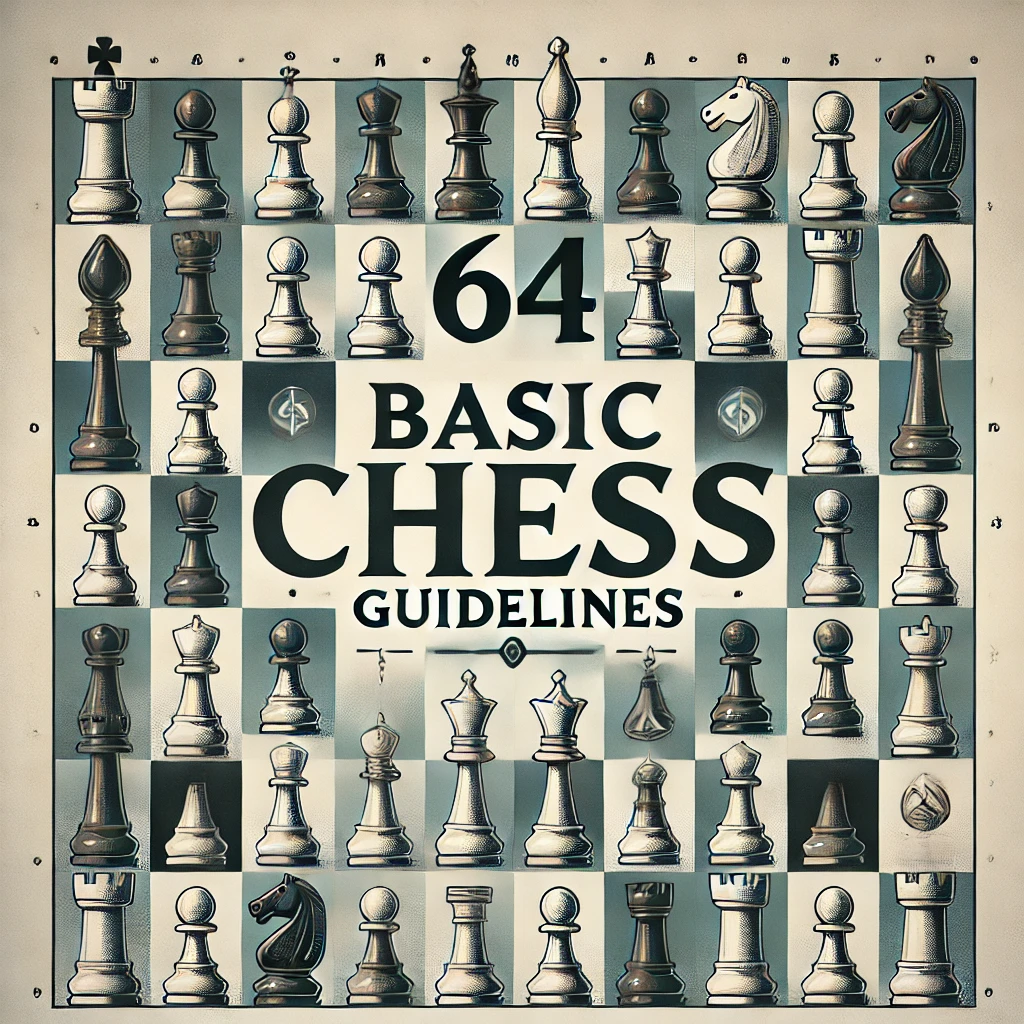These guidelines serve as broad principles for effective play. While they frequently indicate strong moves, it’s crucial to make decisions based on the specific context of the game.
Is it ever okay to deviate from these principles? Yes, but only if you have a clear and compelling reason. Without a solid justification, it’s generally best to adhere to these guidelines.
- Be assertive but strategic; avoid unnecessary risks.
- Ensure every move has a clear objective.
- Exploit your opponent’s style if known, but ultimately focus on the board.
- Pay attention to every move your opponent makes.
- Check only when it’s advantageous; avoid unnecessary checks.
- Address all threats by improving your position or creating a counter-threat.
- Aim to control the game; if you have the initiative, keep it; if not, seize it.
- When exchanging, aim to gain as much as you lose.
- Capture with the least valuable piece unless there’s a strong reason to do otherwise.
- Minimize material loss; if you must lose, lose as little as possible.
- If you blunder, keep fighting; your opponent might relax and let you recover.
- Avoid risky moves hoping your opponent will miss them, unless you’re losing and have nothing to lose.
- Trust your own judgment; if you don’t see the point of an opponent’s move, assume there isn’t one.
- Don’t sacrifice pieces without a strong reason.
- If uncertain about a sacrifice, generally accept it.
- Attack with multiple pieces rather than relying on one or two.
- Look for opportunities to make double attacks.
- Focus on the center: control it, occupy it, and influence it.
- Contest the center using pawns.
- Avoid careless pawn moves; move only necessary pawns during the opening to complete development.
- If possible, advance both center pawns two squares.
- Move only center pawns during the opening, unless the situation demands otherwise.
- Develop your Bishops before blocking them by moving a center pawn just one square.
- Develop pieces quickly, ideally towards the center (especially Knights, which often are less effective on the edges).
- Develop pieces with a purpose, not just for the sake of development.
- Use your time efficiently; aim to develop a new piece each move and avoid moving the same piece twice in the opening without good reason.
- Develop with threats when possible, but avoid pointless threats.
- Develop minor pieces early, prioritizing King’s side pieces before Queen’s side ones, and Knights before Bishops.
- Develop pieces even during exchanges.
- Use development advantages to launch attacks.
- Avoid moving your Queen early in the opening to win a pawn.
- Don’t bring out the Queen prematurely unless it’s required by the position.
- Provide maximum scope for your pieces.
- Take control of open lines.
- Position Rooks on open files or files likely to open.
- Castle early in the game.
- Prevent your opponent’s King from castling and keep it in the center, especially in open games.
- Aim to pin your opponent’s pieces and avoid being pinned yourself.
- Don’t capture pinned pieces until it’s beneficial; try to attack them again, particularly with pawns.
- After castling, avoid moving the pawns in front of your King without a specific reason.
- When attacking the King, target squares around it.
- When applicable, focus on target squares of the color controlled by your unopposed Bishop.
- Look for tactical opportunities, especially on squares controlled by your unopposed Bishop.
- If material loss is unavoidable, ensure you gain as much as possible in return.
- Create attacking batteries with two or more pieces of equal power on the same line; align Queen and Rook(s) on the same file or rank, and Queen and Bishop on the same diagonal.
- Position the less valuable pieces in the front of your batteries unless tactics dictate otherwise.
- Optimize your moves and maintain flexibility.
- Strengthen file control by doubling your major pieces (Rooks or Queen) on it.
- Assess whether the game is open or closed, and play accordingly.
- Generally, keep Bishops in open games and Knights in closed games.
- To enhance your Bishop’s scope, place your pawns on squares of the opposite color.
- Keep weaknesses on the color opposite to your opponent’s strongest Bishop.
- Exchange pieces when ahead in material or under attack, unless there’s a good reason not to. Avoid trades when behind in material or attacking.
- Stick to your chosen plan and only alter it if necessary.
- Gaining space often requires sacrificing time.
- If cramped, alleviate your position by exchanging material.
- Trade poor minor pieces for stronger ones.
- In unsettled positions, keep your plans hidden and make noncommittal moves.
- Advance pawns to gain space or open lines.
- If the center is blocked, don’t feel obligated to castle.
- If lagging in development, keep the game closed.
- Accumulate small advantages consistently.
- Aim to control the seventh rank, especially with Rooks.
- Use an analytical approach: evaluate the position, then ask pertinent questions about your analysis.




